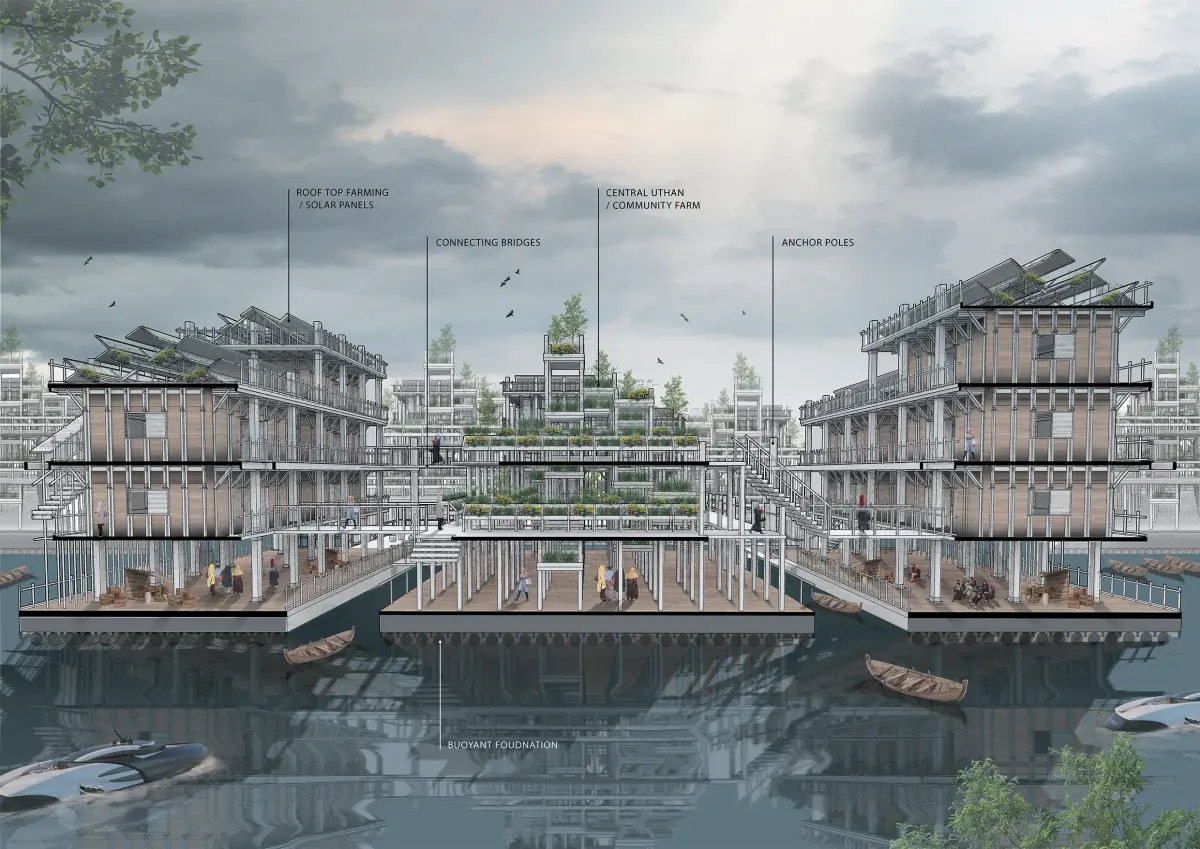
Neo-Griha
BY Lam Harry Sheung Yu
SUPERVISED BY Assoc. Prof. Erik G. L'Heureux
STUDIO THEME HOT AIR: ATMOSPHERE AND THE EQUATORIAL CITY
Abstract
Bangladesh is a country that is vulnerable to the effects of climate change and the rising of sea levels, due to the country’s geographical typography, being flat and low-lying. With the encroachment of seawater inland, this has resulted in the endangerment of housing, food security, and the well-being of individuals. As a result, the government along with multiple NGOs have assisted in providing rural villages with various flood-resistant housing designs over the last decade in attempts to improve the lifestyle of affected communities. Although sea-level rise poses a threat towards rural housings, from my investigations and research into the climatic impacts experienced within these rural villages located in district Khunla, I have come to realize that it is the climatic threat towards the profitable farmlands that have instilled immense suffering upon these rural communities. Therefore, architecture and resilient housings alone are not enough to sustain the livelihood of these villages. Instead, it is through this collective consideration of both architecture as well as the entire social territory of these rural villages, that enable new innovative solutions to emerge, allowing for improved adaptive approaches towards community lifestyles that can thrive alongside climate change.
Supervisor Comments
Adaptive Strategies for Future Rural Villages of Bangladesh: Impacts of Sea Level Rise explores adaptive strategies for future rural villages of Bangladesh as a result of sea-level rise and climate change. The research into the evolution of rural Bangladesh housing has framed knowledge on the essential requirements of achieving a resilient, adaptive design at the housing unit scale. The unit scale entangles the development of villages, agricultural areas, and larger territories. The research illustrates the current shift from paddy farming to shrimp farming, impacting peri-urban and architectural formation. The design acknowledges that architecture and resilient housing alone cannot uplift the people's livelihood; instead, it is the collective considerations between both architecture and the entire social territory that enables a community to thrive alongside climate change.
- Assoc. Prof. Erik G. L'Heureux